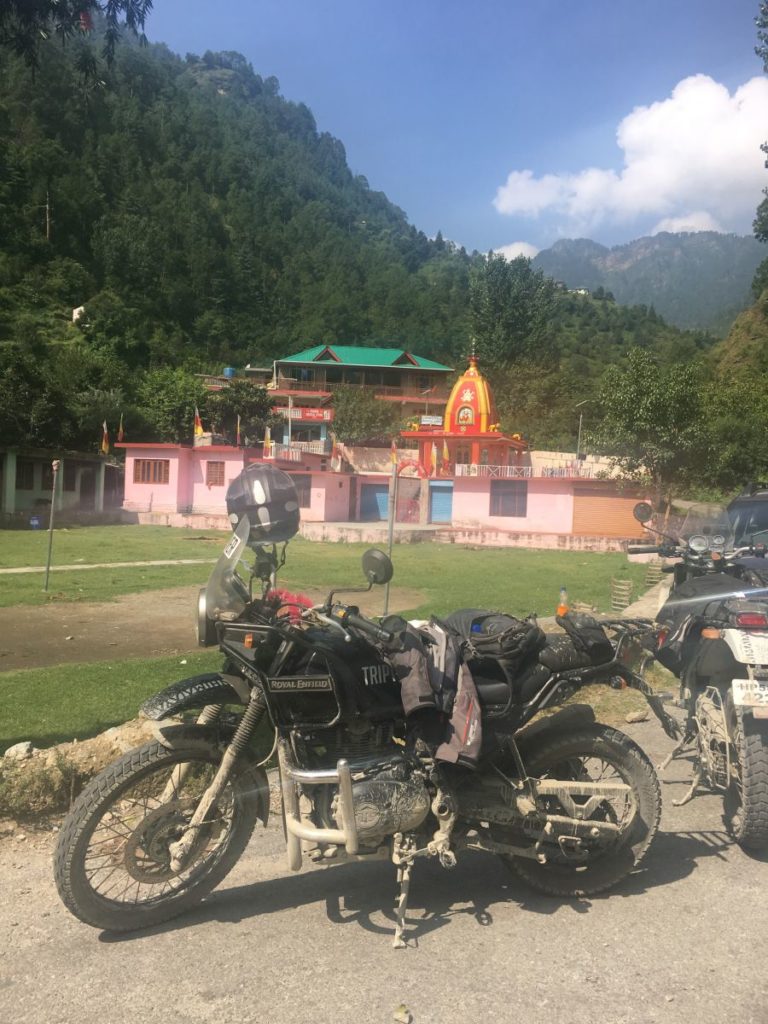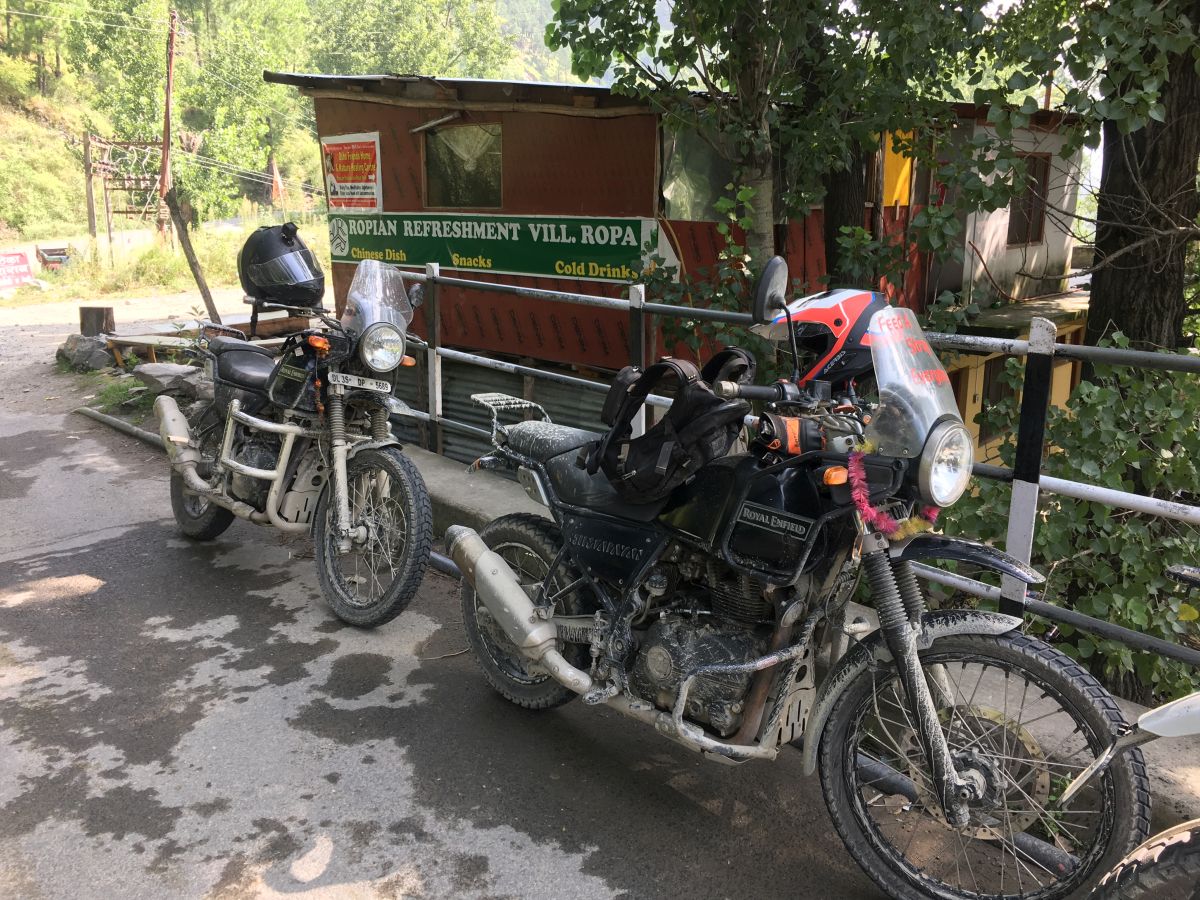
Going local
It may have taken a while, but by day five I felt like I had mastered the Indian approach to using the horn. It is basically your answer to any traffic situation. Want to overtake someone? Why mess around with indicators when you can just beep your horn. How about going round a blind corner on the wrong side of the road? No problem, as long as long as you remember to beep vigorously. Beeping also stops people, cars and motorcycles pulling out in front of you (most of the time). If you want to make progress on Indian roads you need to get beeping.
Today I was beeping to trucks when I overtook them to stop them wiping me out. I beeped at pedestrians to stop them wandering onto the road in front of me. Cars at the side of the road got a beep to stop them pulling out or doing a U-turn in front of me. Even the dogs, goats and other animals on the road were put in their place by my masterful “beep, beep”.
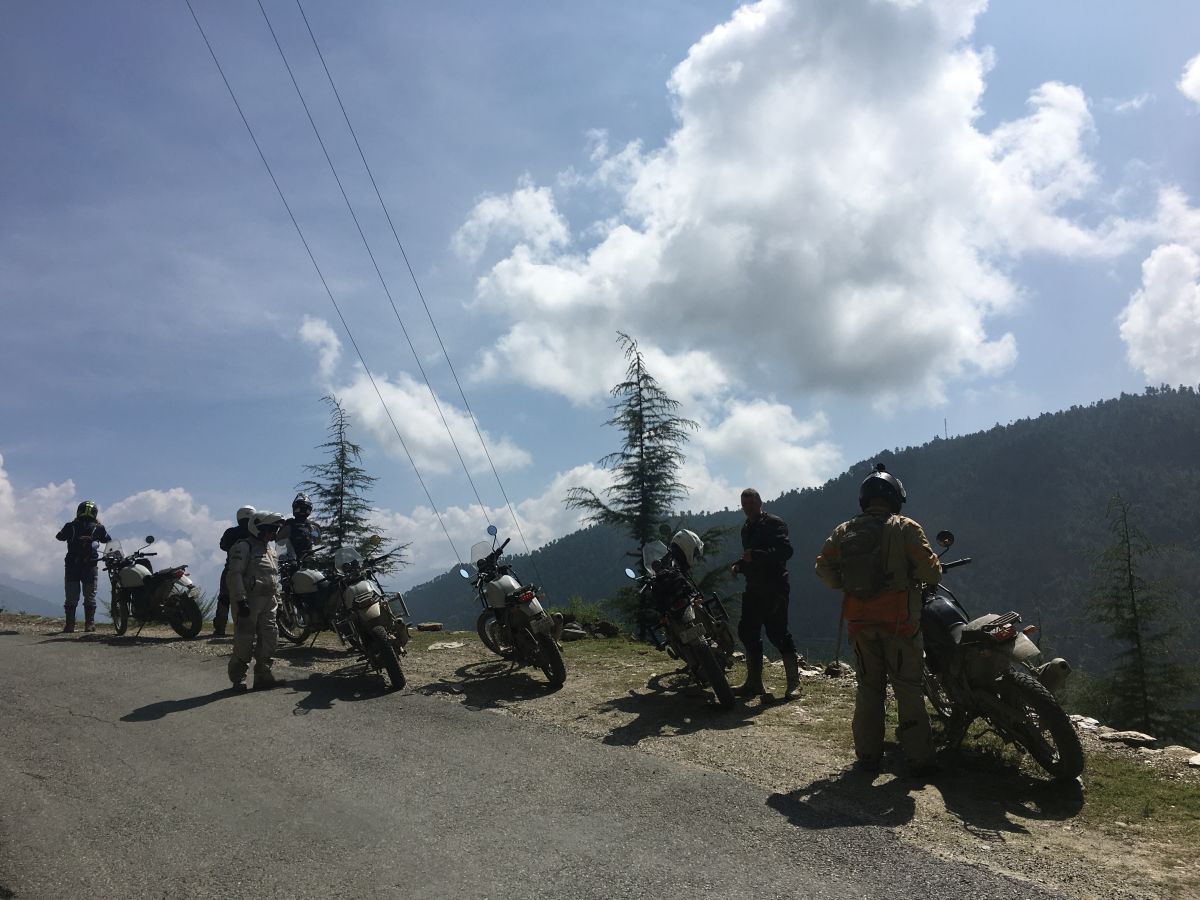
Riding the Himalayan for the fifth day, I realised that I’d got so used to it that the afternoon numb bum, which had bothered me at the beginning of the journey was now almost gone. I guess doing decent mileage helps you get used to it, but now I was also standing on the pegs whenever the road surface got rough, giving my delicate derriere a break from the punishing rear shock.
I also felt more attuned to the bike. I spent more time in the right gear than before, the steering seemed effortless, and I didn’t really have to pay attention to the dash – I knew the gear, revs and speed I was doing. The only thing I wasn’t sure about was the direction, but if possible the compass on the Himalayan’s dash had even less of an idea about it.
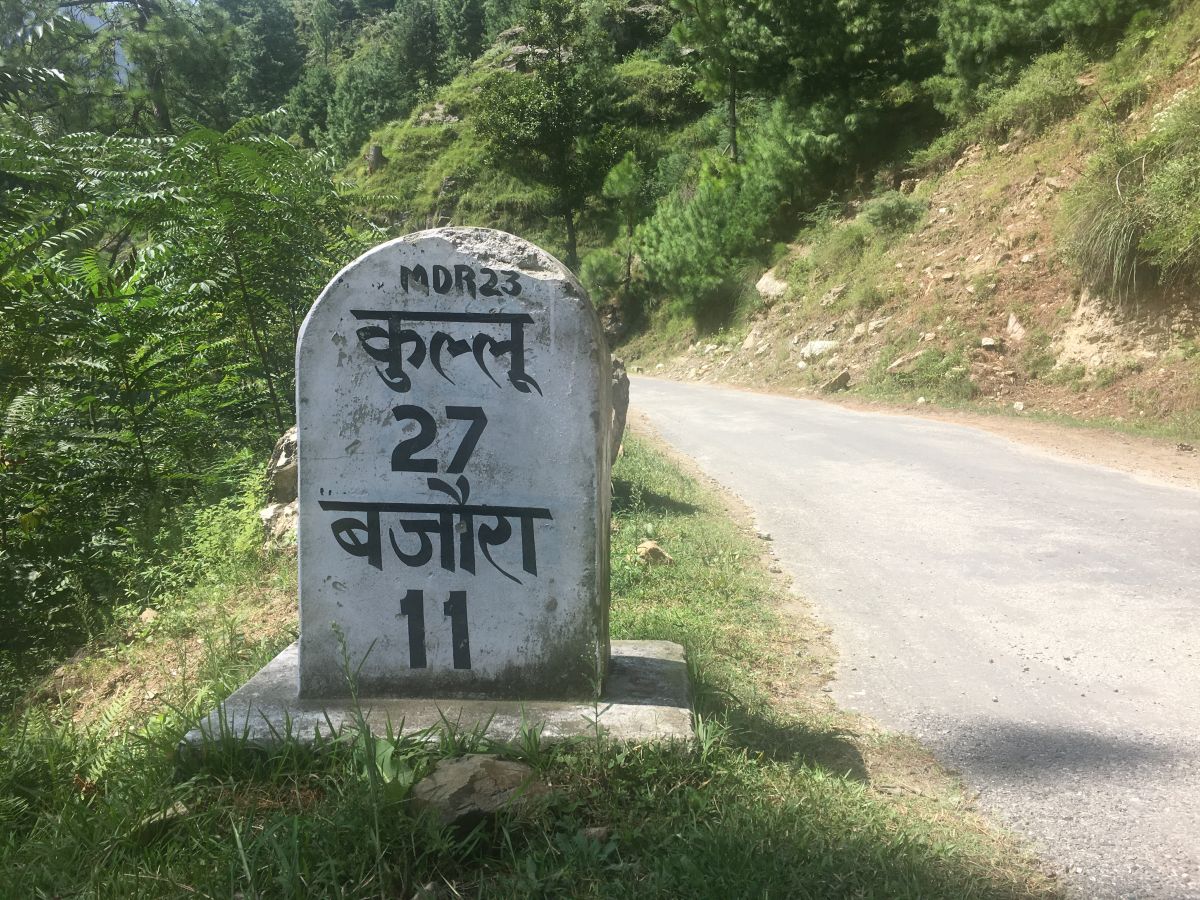
We were heading to Barot (elevation 1829 metres) today. It was a journey of 152km, starting with the new, nearly ready highway, which boasted pristine tarmac with the occasional stretch of bumpy dirt road where the work had not been completed yet. When the road is finished it will cut down journey times significantly, even if you drive in the wrong direction on the dual carriageway sections as some locals insisted on doing.
From the highway we found another quiet mountain road to make the journey more interesting. But even on these roads, were didn’t escape roadworks. After a little while we found that a landslide had closed the road (quite recently by the looks of it), and while it was being cleared, there was only one narrow lane through the piles of dirt. To help make the traffic flow through the bottleneck smoother, the traffic control men (official or not, no idea) were kindly waving traffic from both directions through at the same time. You can imagine how easy that made it to pass through. Luckily we were on the little Himalayans, so we sailed through while the impatient car, truck and bus drivers had to wait for their turn.
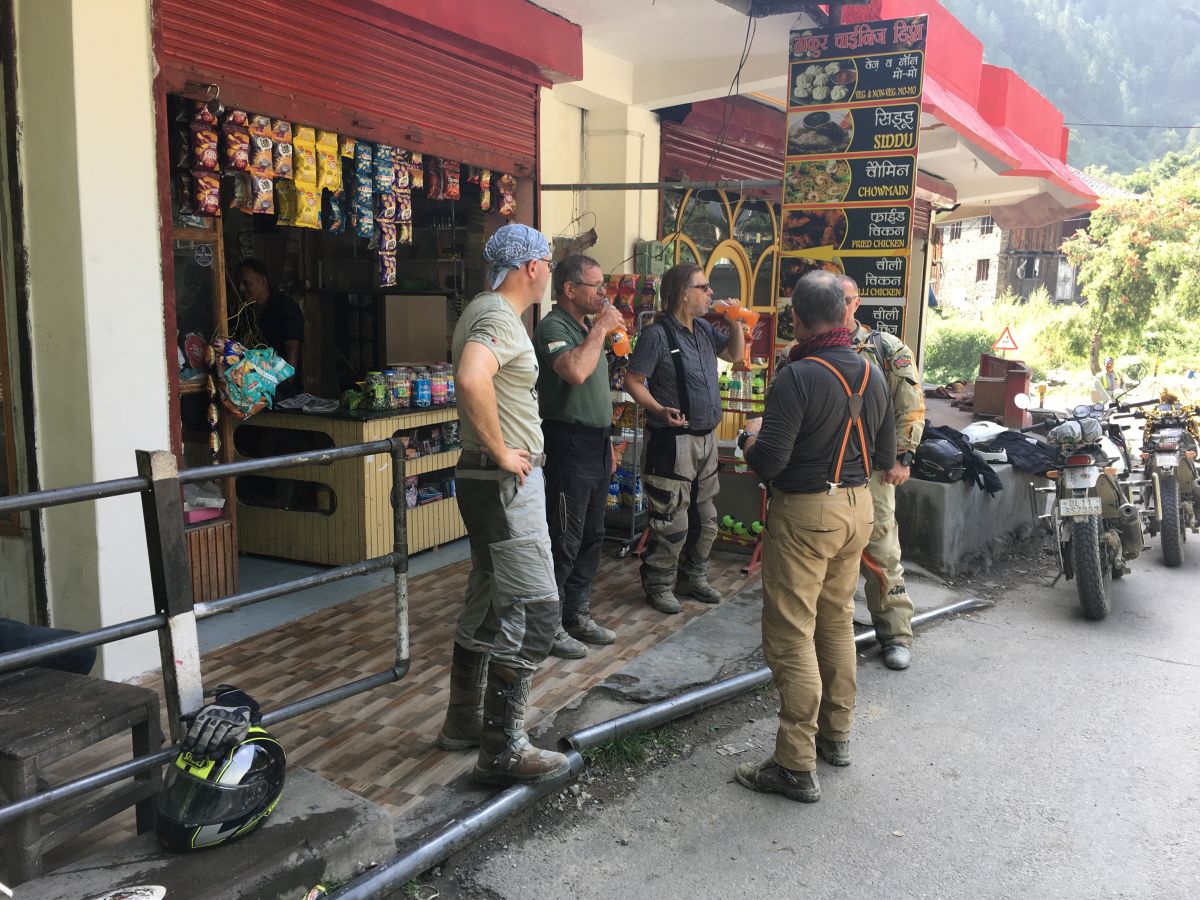
While we have been travelling around Himachel Pradesh, the relations between India and Pakistan have been far from amicable, with the international community genuinely worried that fighting might take place soon. Given that these are two nuclear powers, the situation is serious.
Today we saw several bus loads of Indian army troops going past us while we were having lunch. Given the tensions at the border, they were probably heading that way. There were no smiling faces looking out of those buses.
To end the day on a high, we found ourselves glamping by a river in the Barot valley. This is just one of the curious extremes of life around here – one minute you can watch troops being deployed to rattle sabres with your neighbours, the next you feel like you have walked into the film set of The Sound of Music. Incredible India indeed…
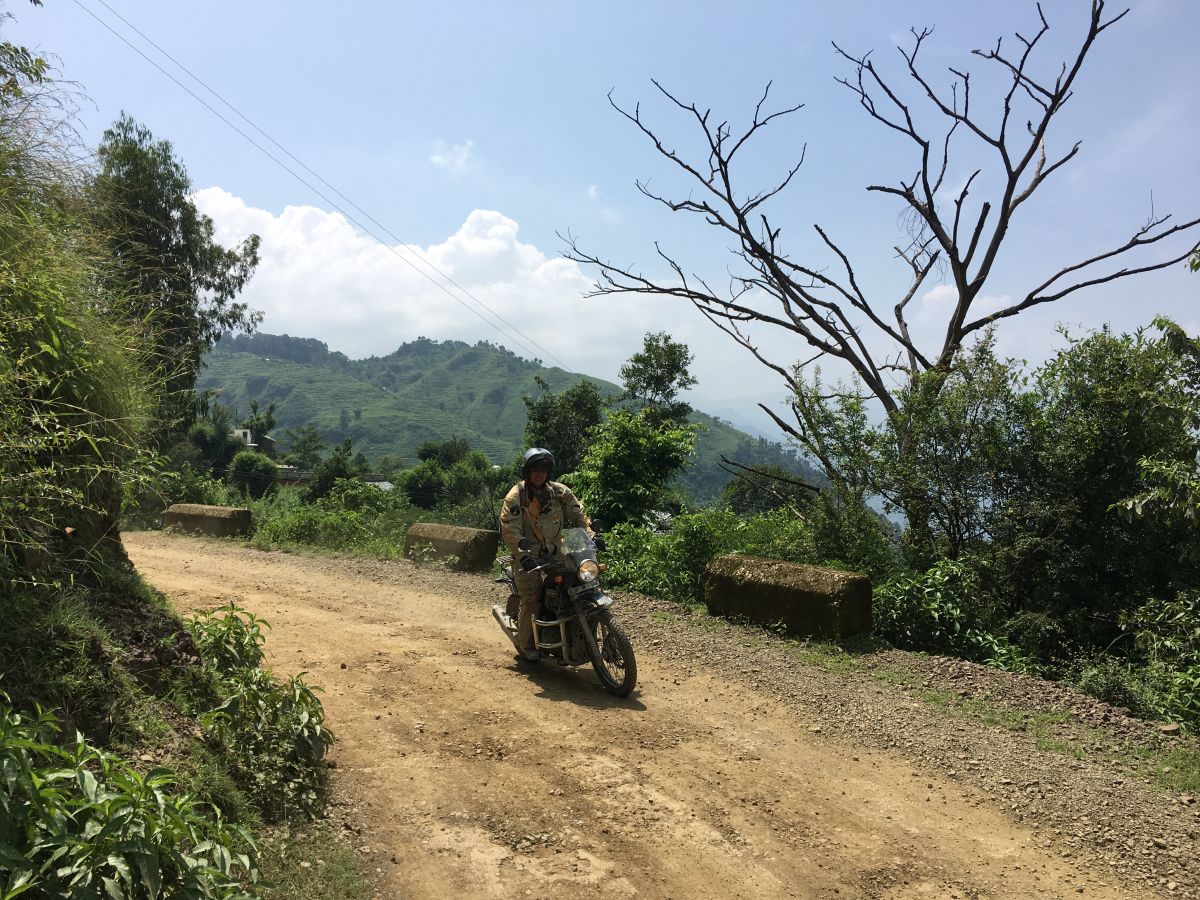
—–
More about Trailquest expeditions and offroad training
Subscribe or buy Motorcycle Sport & Leisure to get the whole story, and loads more touring and adventure.
